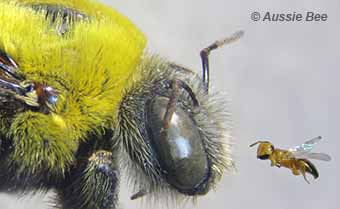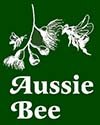LEIOPROCTUS BEES (Leioproctus)
Aussie Bee > Native Bee Photo Gallery > Leioproctus Bees
The Leioproctus Bees are a very large and varied group of native bees from the family Colletidae, found right across Australia. With around 200 described species, these furry bees range in size from 4 to 16 mm. Most are black, but some have an abdomen that is orange-red, or metallic blue, green, gold or red.
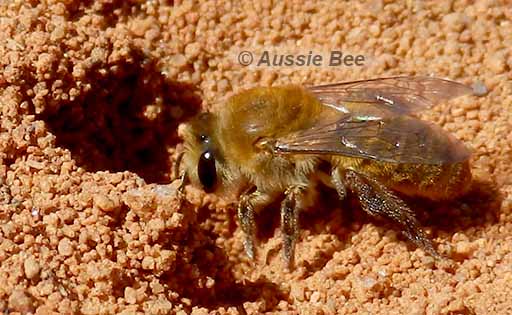
Above: this furry Leioproctus fulvus bee with her metallic golden green abdomen, is about to enter her deep nest burrow in the ground.
Each female digs a nest burrow in the ground and the entrance of the burrow is often surrounded by a conical mound of loose soil particles. A large number of Leioproctus nests may be found in the one area. Some of the larger species may build nest tunnels that are nearly 2 m deep!
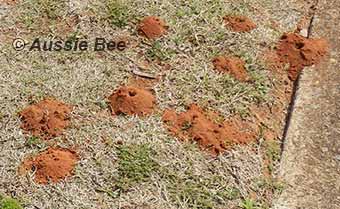
Above: small mounds of bright orange soil particles surround the entrances of these Leioproctus fulvus nests.
In early Spring, small conical mounds of soil appear in some urban backyards in Sydney. The breeding season of the Feathery Leioproctus Bees (Leioproctus plumosus) has begun.
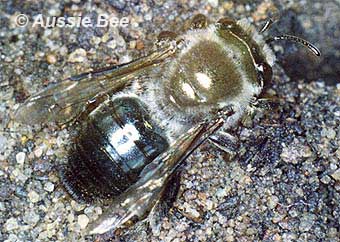
Above: the Feathery Leioproctus Bee has a metallic green thorax and a dark metallic blue abdomen.
After spending nearly eleven months developing underground, male and female Leioproctus plumosus bees emerge to mate, forage and build new nests. Just one female constructs each nest in a quite deep burrow in the soil. The females pack large balls of pollen onto their hind legs to carry it back to their nests.
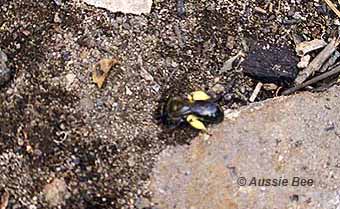
Above: a female Leioproctus bee carrying large balls of yellow pollen into her nest burrow.
The Sydney Feathery Leioproctus Bees nests that we studied were built by 11-12 mm long, furry bees, with a pretty metallic yellow-green thorax and a dark metallic blue abdomen. Quite a large number of nests may be built close together. However, the bees only fly from early spring to October, and they are not aggressive.
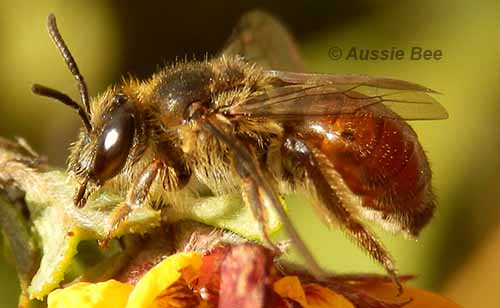
Above: Australian Leioproctus Bees vary quite a lot in appearance. This 8 mm long Leioproctus bee, with her red abdomen, looks quite different from the other two species shown above.
Some Leioproctus Bees are specialist flower pollinators. For instance, some species have elongated tongue segments to allow them to forage on Eremophila flowers and others have dense white hair to help them blend in to their specialist flower -- the smoke bush, Conospermum. Other species are specialist pollinators of Persoonia flowers, including the Persoonia Bee, Leioproctus carinatifrons.
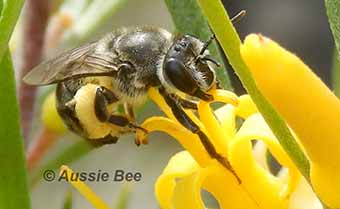
Above: this female Persoonia Bee, Leioproctus carinatifrons, is a specialist pollinator of the Geebung flower, Persoonia.
Flowers Loved by Native Bees
Other Galleries of Native Bee Photos.

